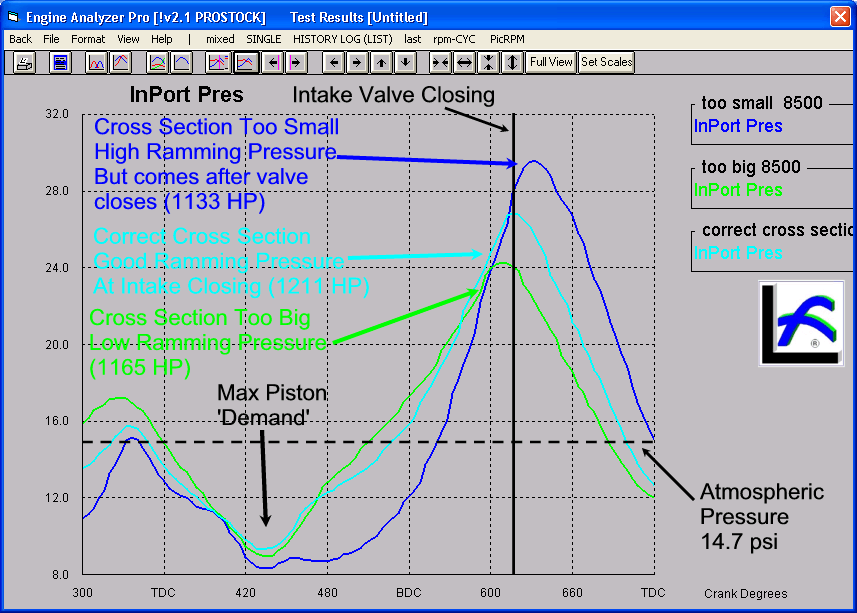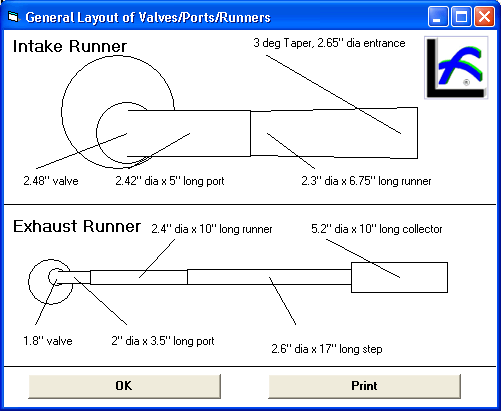Recently a well known racing head porter asked for some graphics (pictures) for an article on head port design. His article dealt with there is more to a head’s performance potential than just CFM flow numbers.
The graphics I supplied and some explanation are what follow in this blog. It deals with how port volume, or more precisely intake runner cross sectional area, affects performance. I simulated 3 cases in our Engine Analyzer Pro – Engine Simulation program where the ONLY thing changed in the 3 cases was the intake port and runner cross section. You will see significant differences in performance.
————————————————————-
This Engine Analyzer Pro graph shows the absolute pressure at the intake valve during the intake stroke. During mid stroke, you can see this pressure is low, well below atmospheric as the piston tries to suck in the intake charge, identified as ” Max Piston ‘Demand’ “. Then when it gets the charge moving, it wants to keep moving well past TDC until intake closing. If you properly size the intake cross section and runner length, you will make maximum power.

The graph shows the very high “ramming” pressure in the intake port as the valve is closing. For the 3 cases shown, the ONLY thing that was changed was the cross section of the intake port and manifold runner. If you figure 14.7 psi is atmospheric pressure, then the “ramming” pressures at intake valve closing is from 10 to 20 psi above atmospheric pressure. That is similar to running a supercharger at 10 to 20 psi of boost, and why the volumetric efficiency for these 3 cases is in the 120% range.

Case 1) If you size the cross section too small, you get high ramming pressure from the higher velocities, but the peak occurs too late (after intake closing) to fill the cylinder. This case made 1133 HP with 111.2 volumetric efficiency on the Engine Analyzer Pro’s simulation.
Case 2) If you size the cross section correctly, you get good ramming pressure and it occurs when the valve is closing to get the best cylinder filling. This case made 1211 HP with 119.3 volumetric efficiency.
Case 3) If you size the cross section too big, you get lower ramming pressure from the lower velocities. This case made 1165 HP with 116.2 volumetric efficiency.
————————————————————-
Note: There is still MORE to cylinder heads than flow and cross sectional area. These include mixture motion (swirl and tumble), port velocity mapping (high and low velocity areas in the port), fuel distribution (wet flow testing), combustion efficiency (cylinder pressure measurements and spark timing effects), and more. Most all of these are considered “black art” and true trends can not be determined accurately for all cases without significant “cut and try” testing.